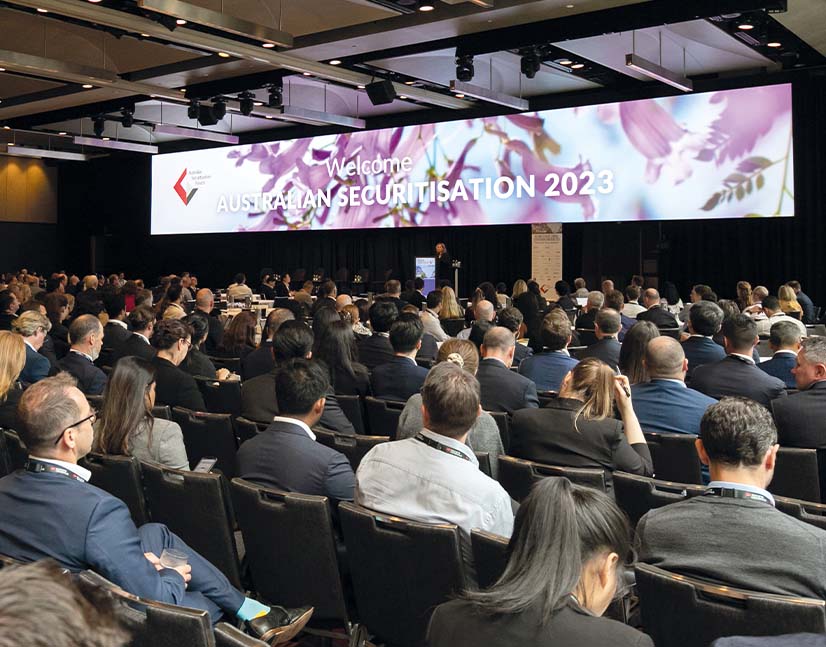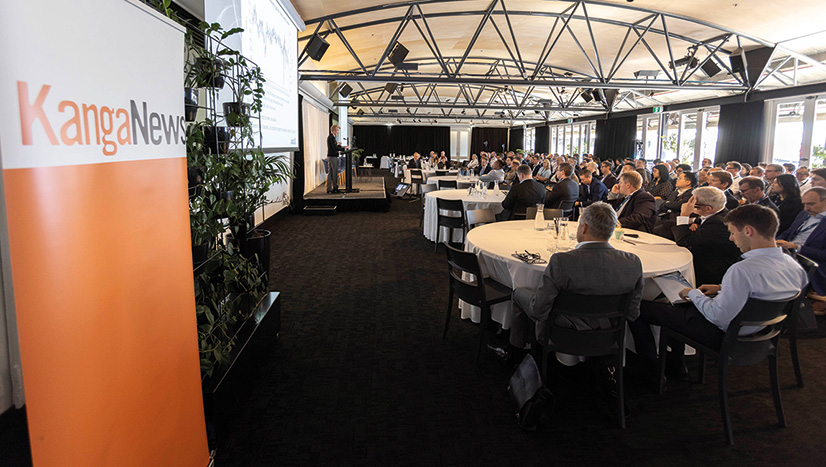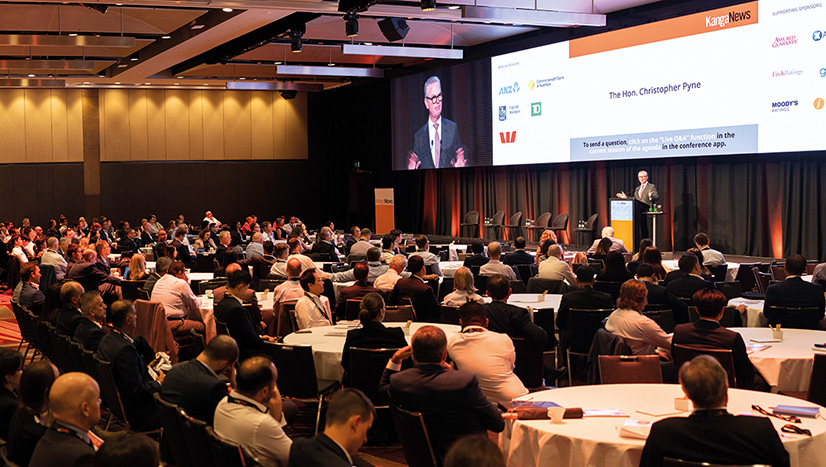
Investor survey: investors digest a full menu of event risk
The 2023 iteration of the Fitch Ratings-KangaNews Fixed-Income Investor Sentiment Survey came at a major inflection point for credit and rates product, as investors provided responses in late March and early April – shortly after bank failures rocked global markets. The survey response suggests investors are more concerned about what these events portend for economies and markets than the direct risk of contagion.
Laurence Davison Head of Content KANGANEWS
Survey data compiled by Alma O'Reilly Information and Data Manager KANGANEWS
This is the 16th time Fitch and KangaNews have surveyed Australian domestic fixed income investors on their views about credit and rates markets, the economy and global risk factors. More than 40 investors responded to the survey – a notable uptick on recent years, perhaps underlying the febrile status of markets.
Immediate fear of banking sector contagion appears to have eased even by late March – replaced, however, by a wider concern about the impact of higher rates on the economy and central banks’ ability to contain the inflation beast as rate hikes bite more deeply. More than half of survey respondents rated inflation outcomes as a high risk factor and almost as many are worried about the domestic housing market, whereas only one-third cite banking sector contagion via a credit squeeze as a high risk (see chart 1).

Perhaps the biggest question for the economy in the coming months, investors appear to believe, is how successfully central banks will manage the conflicting demands of persistent inflation and the negative impact of restrictive monetary policy. Opinions are split on the what the outcome of this dichotomy will be: half of survey respondents expect the Australian cash rate to be higher than the current 3.6 per cent in 12 months’ time while almost as many anticipate rate cuts, for instance (see chart 2).
The general expectation seems to be of near-term pain that eases, to some extent at least, further toward the horizon. Investors believe the worst of Australian house price falls should be played out by the end of this year and that unemployment will rise gradually but not catastrophically over 2023 and 2024 (see charts 3 and 4). Fitch’s analysts write: “It is something of a negative story, in which stubborn inflation is holding back investor confidence. The pessimistic credit outlook is built around inflation and therefore expectations of higher interest rates, which also has an impact on the property market.”
But Fitch also notes the somewhat better outlook for next year, adding: “It is, however, a relatively short-term negative outlook. For instance, while there are no expectations of higher house prices in 2023 there is more optimism about 2024. Neither do any investors expect unemployment to rise as high as 5 per cent by the end of next year. It seems the expectation is for a tough 12 months but better times ahead.”

CREDIT CHALLENGES
The overall outlook on economic direction and the ongoing inflation battle is naturally echoed in investor expectations for credit conditions. The property sector and overall economic conditions are the main risk factors investors cite for bank credit quality in the year ahead, though in this case contagion risk and access to funding are more prominent than monetary and fiscal policy (see chart 5).



In general, investors clearly foresee macro and policy outcomes feeding through to tighter credit conditions and therefore a general tone of risk aversion. Bank lending standards will be tighter across the board in the next 12 months, with particular tightening expected in the higher-risk sectors of high-yield corporate and SME lending (see chart 6).
Corporate borrowers themselves will likely apply a conservative approach to cash management over the coming 12 months. Investors responding to the survey expect companies to prioritise debt management and maintenance or increase of cash cushions in the coming year, a complete reversal from predictions of expansionary or shareholder-rewarding policies in the 2022 survey (see chart 7).
“This survey typically projects shareholder-orientated activities as the main use of cash by corporates but the outlook is now much more conservative, with building cash balances as the main priority. The only other time we saw this outcome was at the onset of COVID-19,” Fitch’s analysts comment.
Unsurprisingly, investors expect fundamental credit conditions in the private sector to deteriorate – also with no discernable focus in the financial sector (see chart 8). Again, the 2023 outcome most closely mirrors that from early 2020, with the difference that on this occasion there is somewhat more faith in the credit outlook for the sovereign sector.
MARKET IMPACT
The consequences of this outlook for capital markets are predictable, though in this case there is a degree of negative differentiation for the financial sector. Nearly three-quarters of survey respondents anticipate wider credit spreads for financial institution issuers, slightly more than expect the same outcome for nonfinancial corporates. Again, sovereign-sector issuers are generally expected to avoid a similar outcome (see chart 9).



It is worth noting, however, that expectations of wider spreads are more limited – even for financial institutions – than they have been in several previous iterations of the Fitch-KangaNews survey. In fact, widening expectations across financials and corporates are roughly at the mid-point of survey outcomes from the past half-decade.
This is reflected in responses to a survey question about what credit spread investors would pay for specific asset classes. The responses are elevated but not out of line with historic results (see chart 10). This appears to match primary market outcomes since the risk events of late March: deal flow has returned and the buy side has been constructive for borrowers willing to meet a revised pricing environment.
This is not to say investors are completely unconcerned about availability of credit in capital markets. Just 14 per cent of survey respondents predict no significant refinancing challenges for any sector – by far the lowest since this option was made available in the survey, in 2017 (see chart 11).

Structured finance appears to be a particular investor focus. Nearly half of all survey respondents expect it to have the greatest refinancing challenge in the year ahead but many also anticipate this will provide an opportunity. The dichotomy is reflected in investors’ most and least favoured asset classes, where structured finance becomes the first option in the history of the survey to appear in both groups in the same set of response data (see chart 12).



Fixed-income investors also appear to believe their sector will be the place to be in the coming year as “outside fixed income” is the least favoured asset class for the first time in the survey’s history. Confidence that bank woes will remain idiosyncratic rather than system-wide appear to be reflected in the prominence of the financial sector in the most preferred options for a new dollar of investment assets. At the same time, the disappearance of the sovereign sector as a nonprefferred option perhaps speaks to the expectation of a flight to quality.
Another sign of what may be a more positive outlook ahead is investors’ expectations for duration. More than 40 per cent anticipate adding duration over the next 12 months (see chart 13) – a record for the survey – though this may also reflect a significant shortening of duration preferences ahead of the survey and thus more a return to normal than an extension.


HIGH-GRADE ISSUERS YEARBOOK 2023
The ultimate guide to Australian and New Zealand government-sector borrowers.

WOMEN IN CAPITAL MARKETS Yearbook 2023
KangaNews's annual yearbook amplifying female voices in the Australian capital market.














